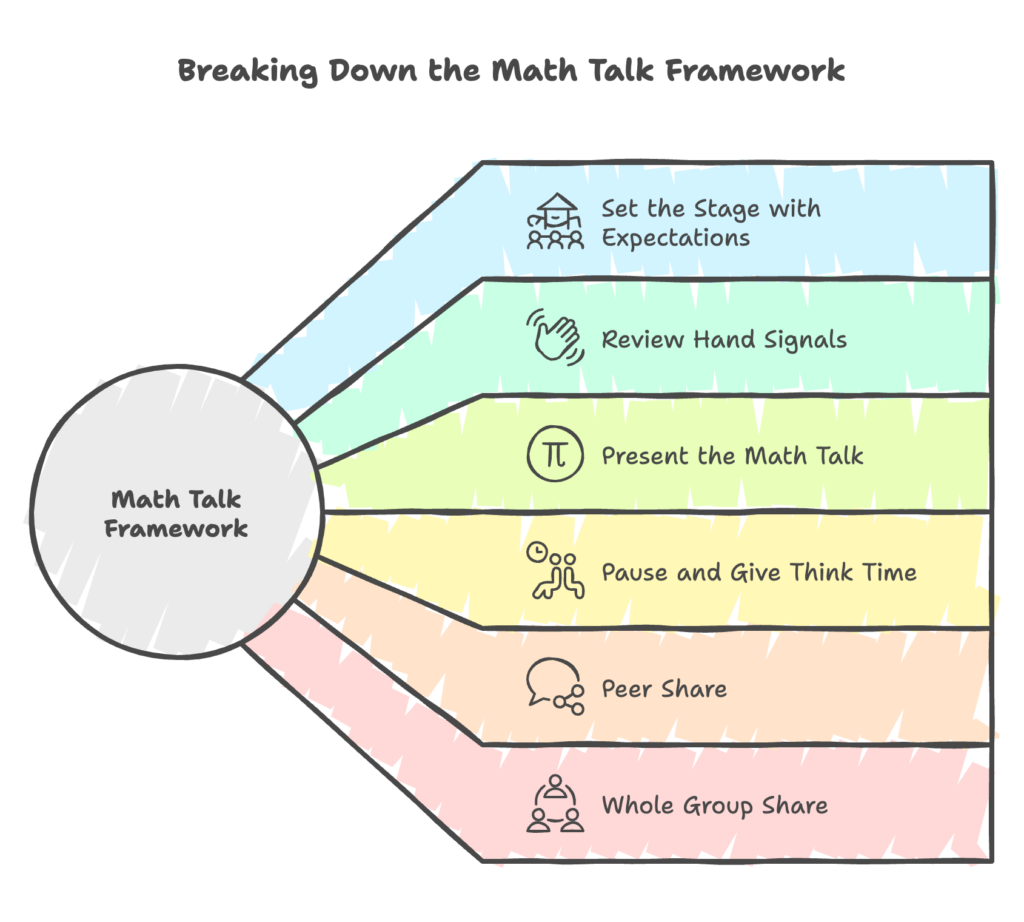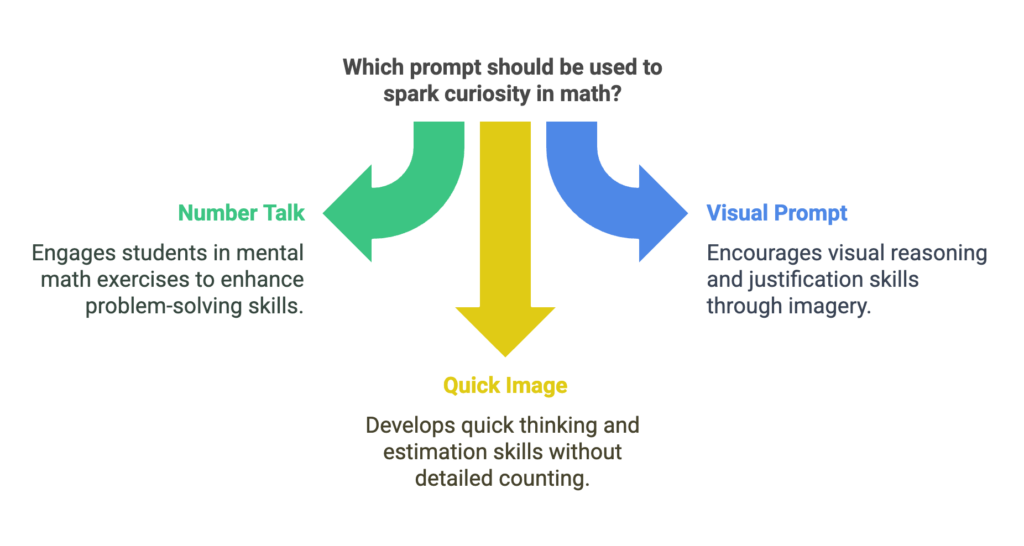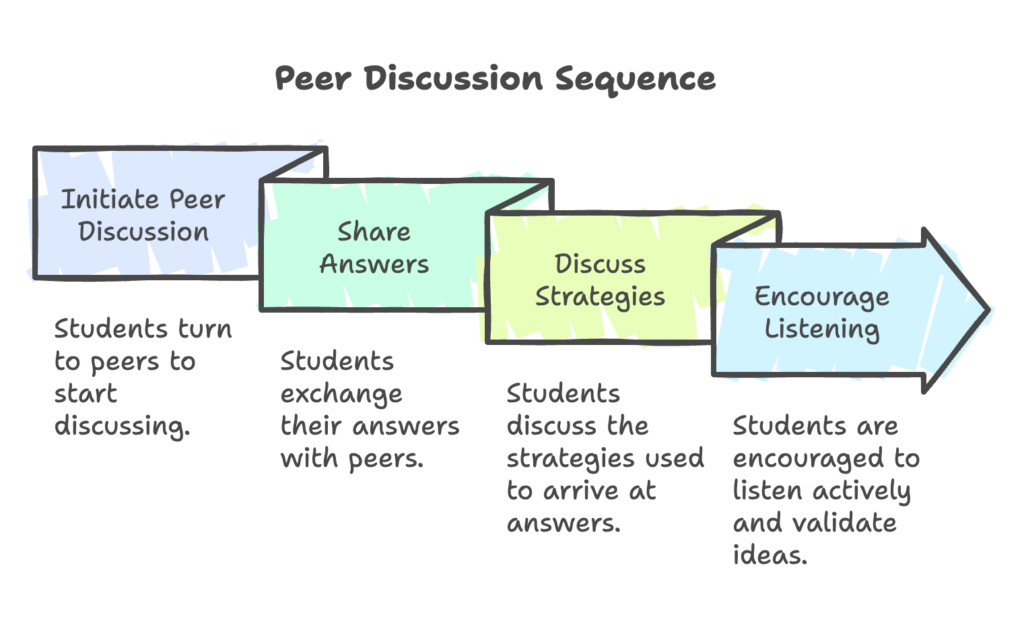Browse around
topics
Hey Friend!
Elementary Teachers who love talking about math.
We're Tiana & Whitney
Teaching math was not our favorite. We taught math traditionally with memorized steps and timed tests because we didn't know math could be fun. Read our story
The Power of Think-Time During Math Talks
Math Talks
Enhancing Math Conversations: Using Talk Posters Effectively
Math Talks
Build Multiplication Fluency with Visual Arrays
Fluency + Fun
Celebrating the Brilliance of Every Student in Math
Teacher Toolbox
Let's get Social!
Follow us on Instagram for the latest math tools and strategies!
A Simple Guide to Building Confident and Creative Math Thinkers
In classrooms buzzing with curious minds, Math Talks are a game-changer. They’re short, intentional activities that foster number sense, improve fluency, and build confident problem-solvers. With just ten minutes a day, you can transform math learning in your classroom and create a culture where thinking is valued over speed.
Let’s dive into my Math Talk Framework—this is the exact six-step process I use to lead meaningful math conversations that inspire my students to explore, explain, and embrace mistakes.
What Are Math Talks?
Math Talks are quick mental math activities where students solve problems, discuss strategies, and justify their reasoning. Whether it’s a number problem or a visual prompt, the focus is on how students think, not just the answer. They promote collaboration, creativity, and confidence, giving every student a voice.
Here’s my exact six-step Math Talk framework for leading effective Math Talks:

Step 1: Set the Stage with Expectations
Start your Math Talk by setting a positive and supportive tone. I start by reminding students that this is a space to think deeply, take risks, and share their ideas without fear of judgment. This step establishes the mindset that every voice matters and every mistake is an opportunity to grow.
Math Talks thrive on a positive, risk-friendly classroom culture. Before you begin:
- Remind students that Math Talks are about thinking and sharing, not just finding the “right” answer.
- Celebrate mistakes as learning opportunities.
- Encourage all students to revise their thinking and actively participate.
Tip: Build a classroom mantra like, “All thinking is valuable thinking,” to normalize risk-taking and mistakes.
Why it matters: When students feel safe to share their thinking, they’re more likely to engage in meaningful discussions and take ownership of their learning.
Step 2: Review Hand Signals
Hand signals are essential to creating a classroom where every student can participate without pressure. They allow students to communicate their thinking non-verbally, giving both fast and slow processors the space they need.
Before starting, I review these signals with my students:
- 👊 Fist in front of chest: “I’m thinking.”
- 👍 Thumbs-up low in front of chest: “I have an answer and a strategy.”
- ✌️ Two fingers: “I have an answer and more than one strategy.”
- 🤙 Hang-loose rocking motion: “I agree.”
- 👐 Two fists stacked: “I’d like to build on someone’s thinking.”
- 🤔 Pointing to head, rolling arms: “I’d like to revise my thinking.”
These signals encourage collaboration and ensure every student has time to develop their thoughts.
Tip: Use visual reminders (like a chart or poster) of the hand signals and their meanings to keep them fresh and accessible during Math Talks.
Why it matters: Hand signals ensure equity by allowing all students to participate at their own pace, making Math Talks inclusive for every learner.
Step 3: Present the Math Talk
This stage of the Math Talk Framework is where you introduce the content that will spark discussion. Whether it’s a number problem, visual prompt, or quick image, choose a problem that invites multiple approaches and perspectives.
Choose a prompt to spark curiosity. Here are three ideas to get you started:
- Number Talk: Write an expression on the board and have students solve it mentally.
- Visual Prompt: Show a “Which One Doesn’t Belong?” image and ask students to justify their choice.
- Quick Image: Flash a pattern or grouping of objects and challenge students to determine the total without counting one by one. Download our free Quick Image slides for K-5.
Show the prompt clearly and keep the focus on thinking, not speed.
Tip: Frame the problem with a hook, like, “I wonder how many different ways we can solve this problem” or “Let’s see if anyone notices something surprising.” This helps set the tone for open-ended exploration.
Why it matters: A well-chosen math talk prompt encourages creativity, critical thinking, and active engagement, laying the foundation for rich discussions. Check out our 2-Weeks of free math talks: K-2 Math Talks and 3-5 Math Talks.

Step 4: Pause and Give Think Time
Thinking takes time, and this step ensures every student has a chance to process the problem and develop a strategy. After presenting the prompt, pause for what feels like an uncomfortably long time. Resist the urge to fill the silence—this time is for your students to shine.
Encourage students to show their thinking with hand signals, and gently remind anyone off-task to stay engaged. For students who seem stuck, offer a guiding question, like, “What do you notice about the numbers?”
This step is crucial but often rushed. After presenting the prompt, pause.
- Allow time for students to process, strategize, and form an answer.
- Use hand signals to check in with students’ progress.
This moment reinforces that thinking is more important than being fast. Waiting feels uncomfortable at first, but it sends a powerful message: every student’s thinking matters.
Tip: Use the hand signals students show during think time as a quick formative assessment. For example, notice how many students are still “thinking” versus those ready with multiple strategies. This can guide your pacing and identify students who may need additional support.
Why it matters: By prioritizing think time, you reinforce that the focus is on thoughtful problem-solving rather than speed, making math accessible to all learners.

Step 5: Peer Share
Once students have had enough think time, invite them to share their ideas with a partner. Peer sharing gives every student a chance to verbalize their thinking and gain confidence before the whole-group discussion.
Encourage students to listen actively and use sentence starters like, “I noticed…” or “My strategy was…” to keep conversations focused. You can learn about out the Math Talk Poster we use with helpful sentence stems. This step is especially powerful for students who are shy or unsure about their answers.
Once students have had time to think, have them turn and talk to their neighbor for a quick discussion.
- Ask them to share both their answer and their strategy.
- Encourage active listening and validating each other’s ideas.
Peer sharing is especially helpful for shy students or those unsure of their answers. It builds confidence and ensures everyone has a voice before the whole group discussion.
Tip: Walk around the students during peer sharing to listen for unique strategies or insights you might highlight later in the group share.
Why it matters: Peer sharing ensures that every student’s voice is heard and helps build a supportive classroom community where ideas are valued.

Step 6: Whole Group Share
The final stage of the Math Talk Framework is the whole-group share. This is where students’ ideas take center stage. Call on volunteers to share their answers and strategies, documenting their thinking visually on the board. Highlight connections between strategies, encouraging students to build on or revise their own ideas.
Finally, bring the class together for a group discussion.
- Invite students to share their answers and strategies. Write everything down—every answer, every idea.
- Highlight multiple strategies and allow students to build on each other’s thinking.
- Model how to articulate and visually represent mental math strategies.
This step demystifies mental math and empowers students to see their thinking as valuable. Plus, it reinforces the idea that there are often multiple ways to solve a problem.
Tip: While students are sharing their strategies, ask follow-up questions to encourage deeper thinking. Questions like, “How do you know?” or “Why did you do that?” prompt students to explain their reasoning more thoroughly and reflect on their process.
Why it matters: This step fosters a classroom culture where all ideas are valued, building students’ confidence and helping them see math as flexible and accessible.
Why Math Talks Matter
Math Talks are more than an activity—they’re a mindset. By incorporating these six steps, you’ll:
- Boost number sense: Students develop a deeper understanding of math concepts.
- Encourage creative problem-solving: They’ll see there’s more than one way to solve a problem.
- Build fluency skills: Repeated exposure to different strategies strengthens skills over time.
- Promote collaboration: Students learn to listen, share, and build on each other’s ideas.
- Create confident thinkers: They’ll embrace mistakes and take risks in math.
Try the Math Talk Formula in Your Classroom
With just 10 minutes a day, the Math Talk Framework can transform your math instruction. Start small, be consistent, and watch as your students’ curiosity, confidence, and creativity grow.
With these tools in hand, you’re ready to lead Math Talks that inspire every student to love math. Let’s talk math—because every thinker belongs!
Pin
Share
Leave a Reply Cancel reply
Previous Story
next Story
© 2025 Math Happy Hour. Site by Sugar Studios
Heard about Math Talks but unsure where to begin? 🤷♀️ Don't stress!
5 Steps to Get Started with Math Talks
Join us on Insta
We're so glad you're here, stick around and let's talk about math! xo Whitney & Tiana
